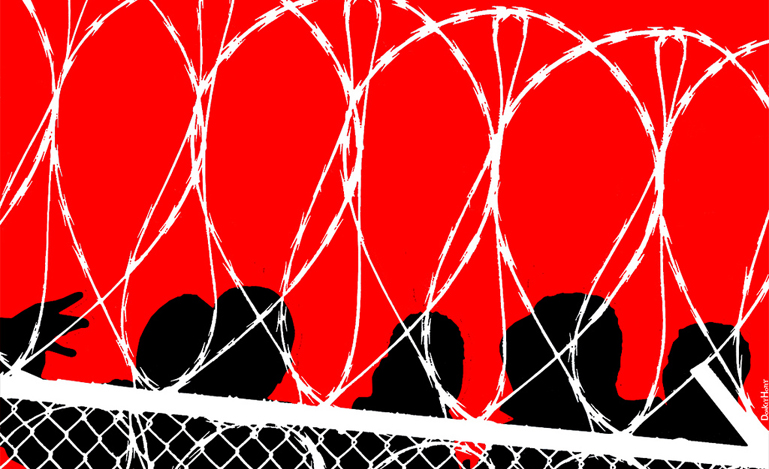Lawyers, judges, law schools and legal organizations have a long and challenging road ahead in addressing historic and current deficiencies in how Indigenous peoples are treated in the Canadian legal system. Of the 94 calls to action in the Truth and Reconciliation Commission’s 2015 report, two are specifically directed towards the legal profession. One calls upon the Federation of Law Societies to ensure that lawyers receive cultural competency training. The other calls upon law schools to require that all law students take a course in Indigenous peoples and the law.
“Indigenous lawyers can only do so much,” said Koren Lightning Earle, Indigenous Initiatives Liaison at the Law Society of Alberta in Calgary, who spoke at a March CBA-FLSC Ethics Forum in Toronto on steps lawyers and the legal system can take to achieve reconciliation with Indigenous peoples. “Part of the next step of reconciliation is now that we know the truth, we have to deal with it, we have to swallow it, we have to move forward.”
Between 1831 and 1996, more than 150,000 First Nations, Inuit and Métis children were removed, sometimes forcibly, from their families and sent to residential schools. This was “designed to assimilate Indigenous children into Canadian society by eliminating parental involvement in their spiritual, cultural and intellectual development,” said moderator Paul Schabas, Law Society of Ontario Treasurer. Reconciliation is still at the beginning of the process, he added.
A key part of reconciliation is education, said Kelsey Sitar of Sitar & Milczarek in Calgary. “It’s about educating yourself as a defence lawyer, about educating your colleagues, Crown counsel or other defence lawyers who might be on a particular file with you, and ultimately educating the court.” For non-Indigenous lawyers, “that means recognizing what you don’t know, seeking out the knowledge that you need, building meaningful relationships with your clients so that they can share their story and lived experience with you.”
The discussion turned to Gladue reports, which courts can request when sentencing an Aboriginal offender. Sitar believes it “has been horribly ineffective. In fact, the rates of incarceration of Aboriginal persons have actually increased” since the Supreme Court’s 1999 Gladue decision.
As a lawyer and an Indigenous person, Katherine Hensel of Hensel Barristers in Toronto said she repeatedly feels a sense of betrayal when she undertakes the litigation process on behalf of Indigenous clients. “The unfairness and lack of rigour is manifest” because lawyers, judges, witnesses and institutions “don’t know what they need to know about who we are, why we are, how we are.”
“Reconciliation cannot be the sound of one hand clapping,” added Hensel. Lawyers and law students, because they have so much agency, have an added obligation to try to learn about Indigenous peoples, “not just an esoteric and ethical and moral obligation, but so they can stop being agents of harm.”
Since the common law builds on itself, the tools that exist in Canadian cases are informed by what’s come before, said Hensel, “and what’s come before has not been fair, has not been accurate, has not with integrity reflected or pursued our objectives or our realities.” Referring to child welfare decisions, Hensel said that hundreds of thousands of children are still being separated from their families.
Within Canadian law, there’s a “need to make it more culturally relevant and respectful,” said Kirsten Manley-Casimir, Acting Legal Director, Indigenous Justice Division, Ministry of the Attorney General, Ontario in Toronto, “because a lot of Indigenous people are trapped within that system, particularly in the criminal context and the child welfare context.”
The Canadian system values objectivity—judges who don’t know the people involved in a case—whereas an Indigenous legal system values “someone who has earned the respect of that community and knows the people involved so that they understand the context and what the best solution is to the problem,” Manley-Casimir said. Often a southern Ontario judge flies into an Indigenous community, makes a decision and then leaves, “so a community is left with a decision that actually doesn’t work in that context.”
One suggestion for equality in the legal system is to appoint more Indigenous lawyers to the Bench, which the Indigenous Bar Association has long called for. Often half the judicial appointments in each jurisdiction are bilingual. Some Indigenous people speak both French and English but many don’t, which “limits the number of positions that many Indigenous lawyers can apply for, said Manley-Casimir.
Indigenous law has existed for millennia, developed by Indigenous peoples to respond to their particular communities, Manley-Casimir added, “and many parts of Canadian law or governance structure have actually drawn on Indigenous law.”
Ann Macaulay is a frequent contributor based in Toronto.



